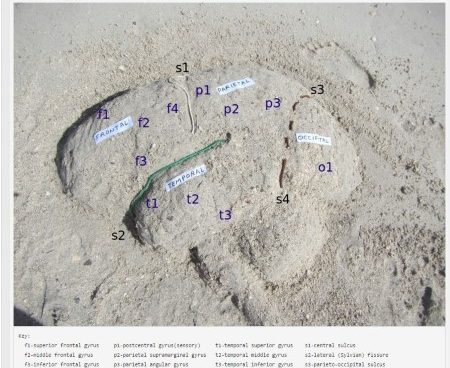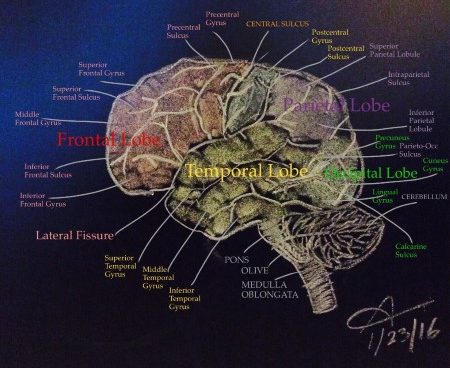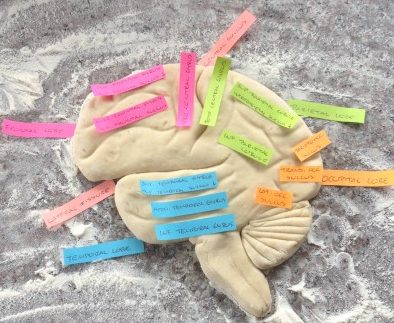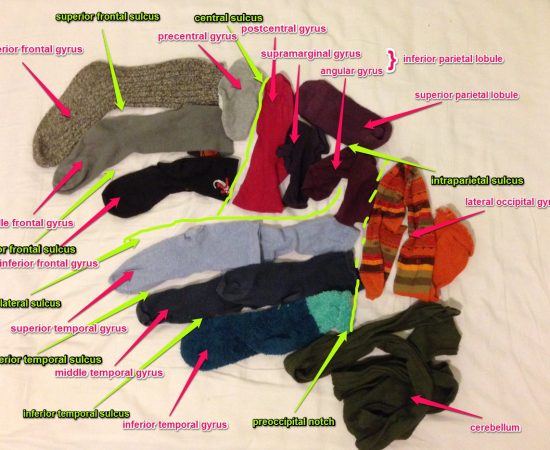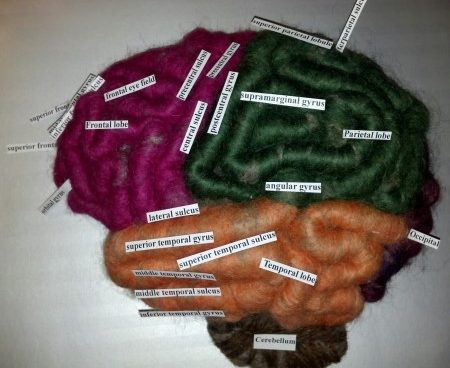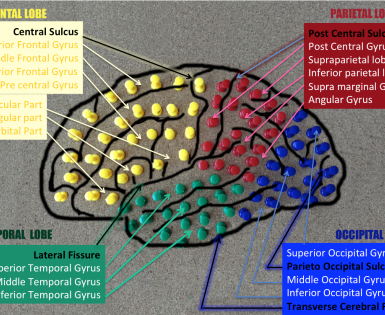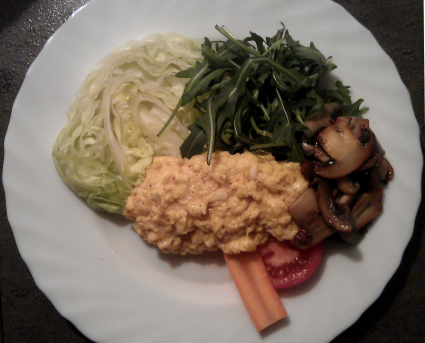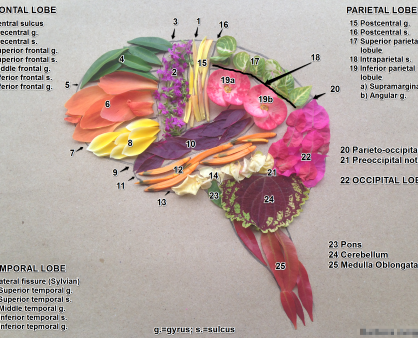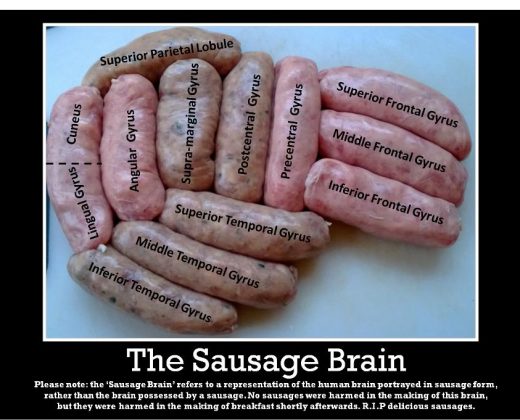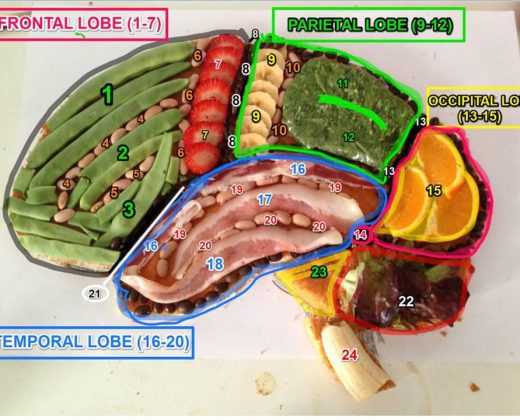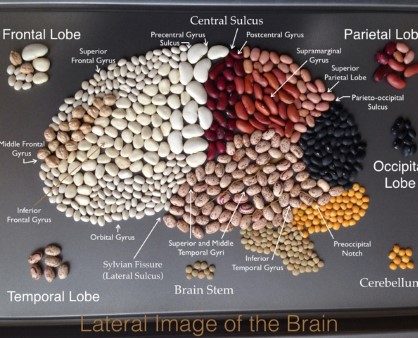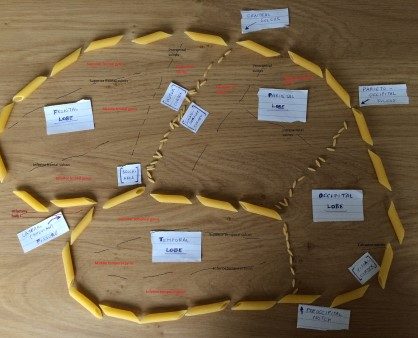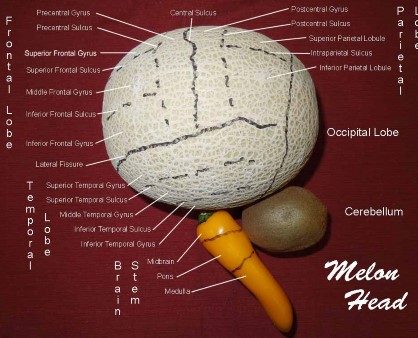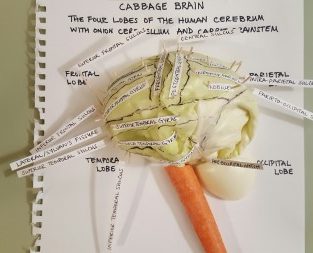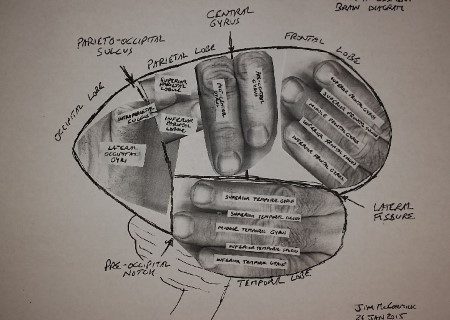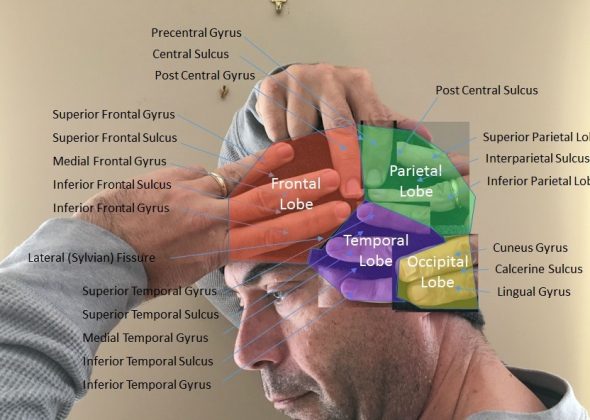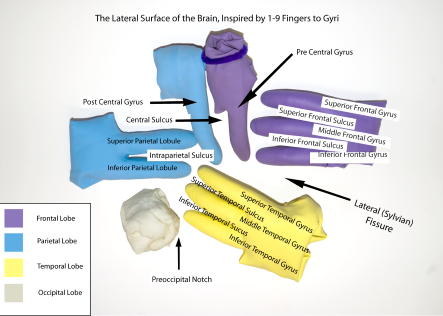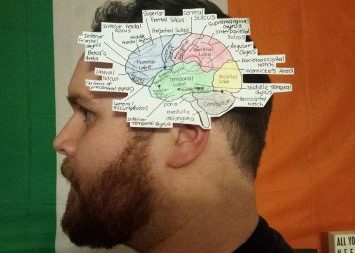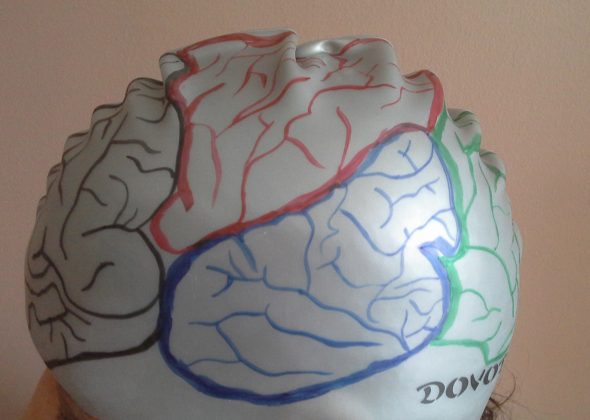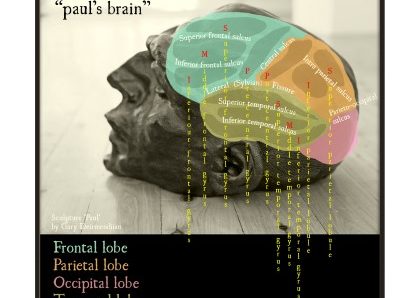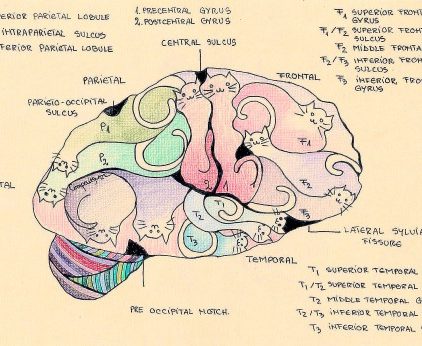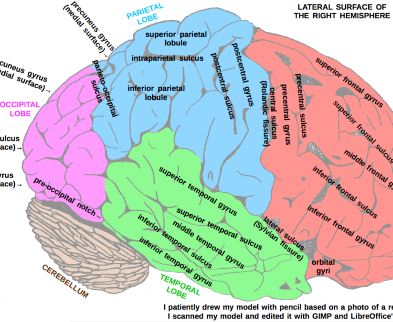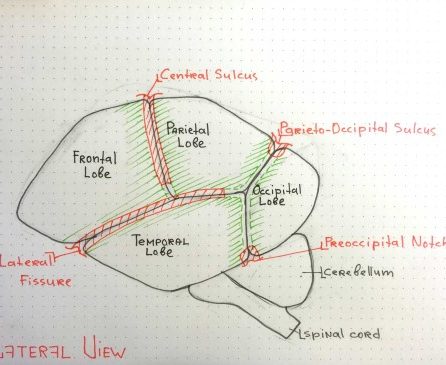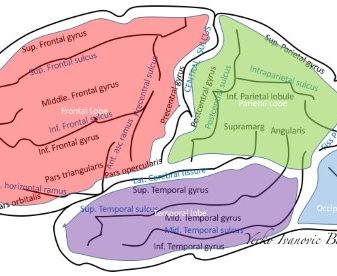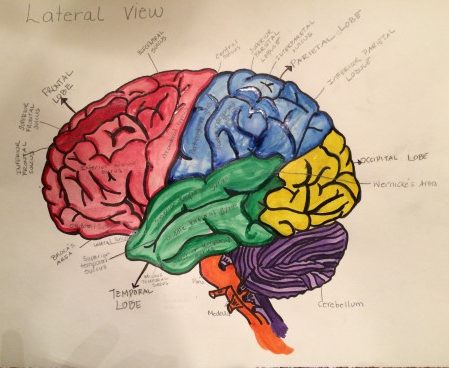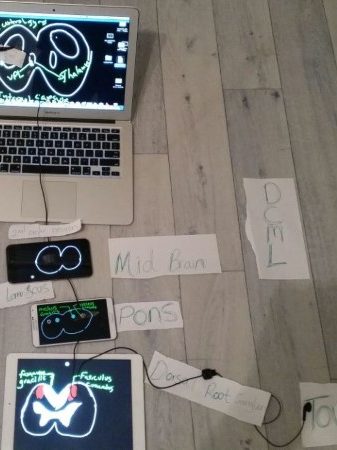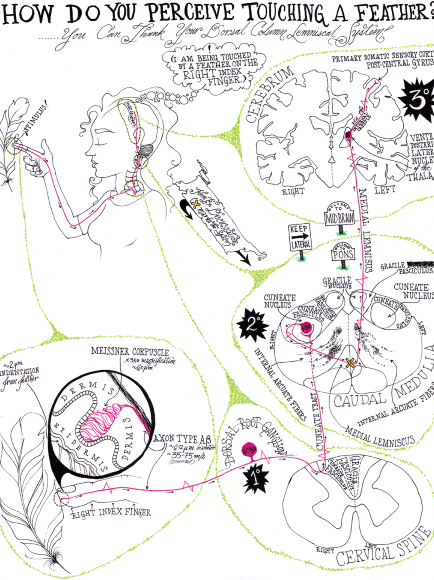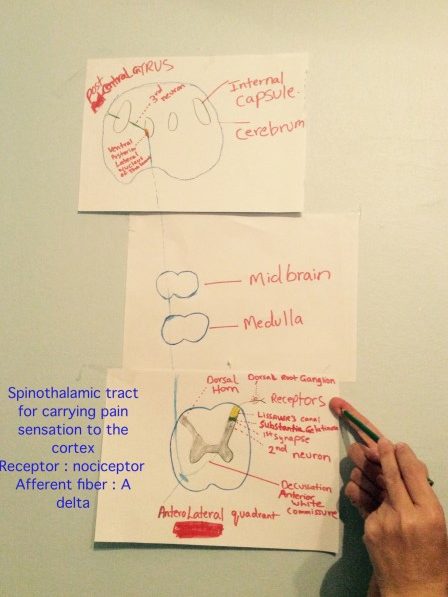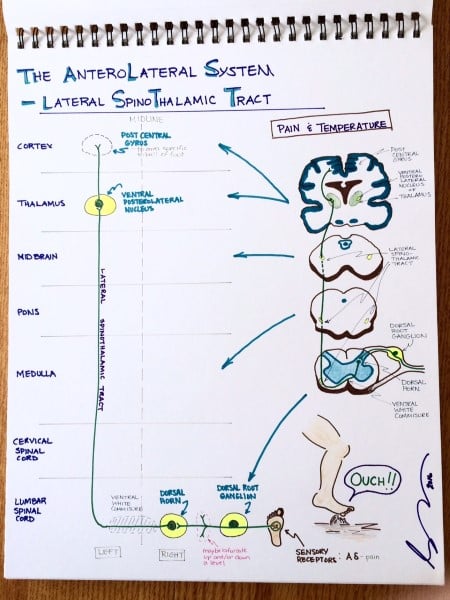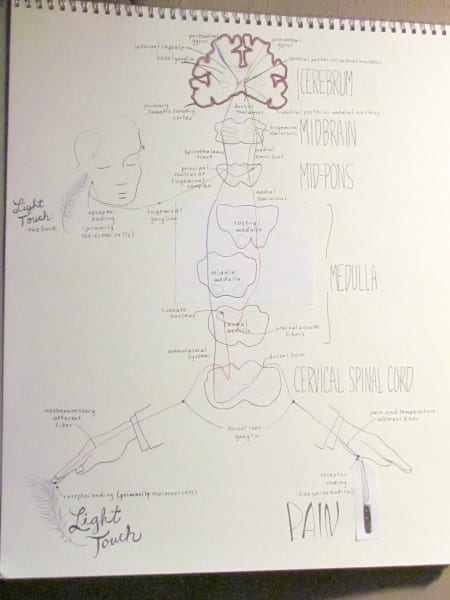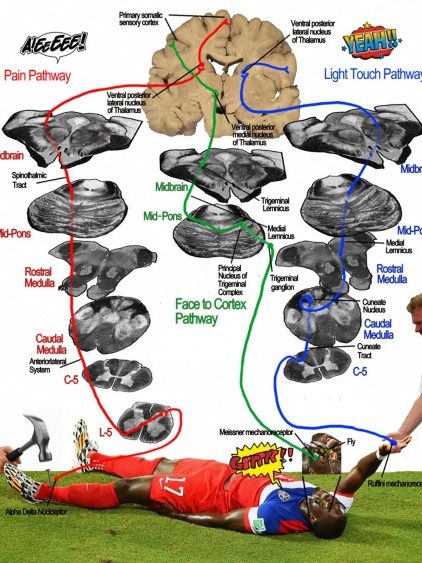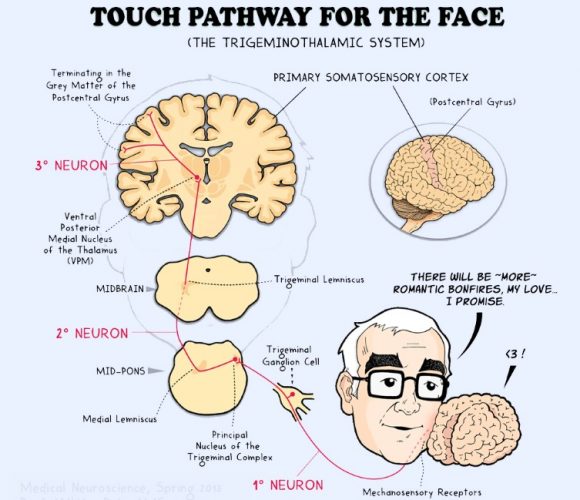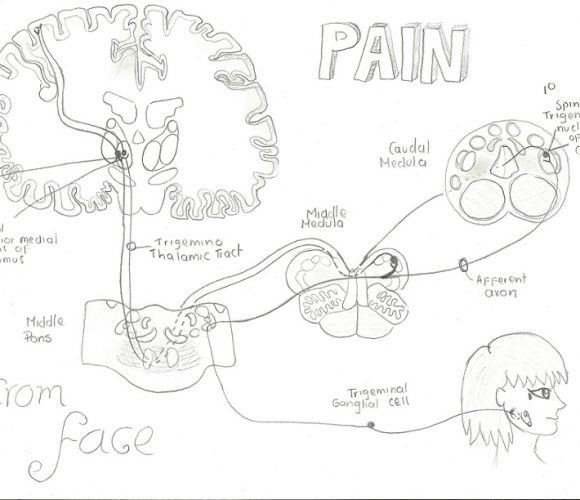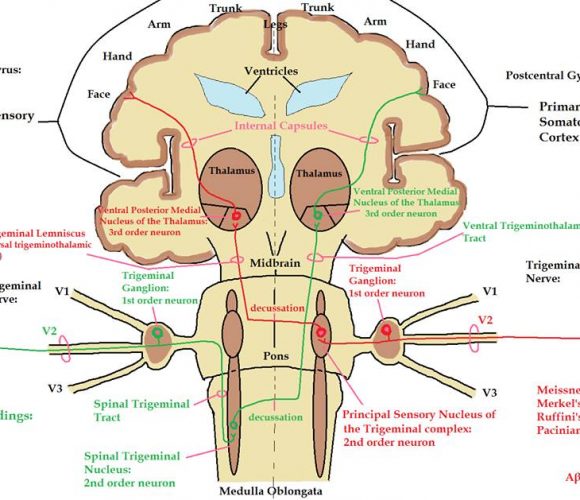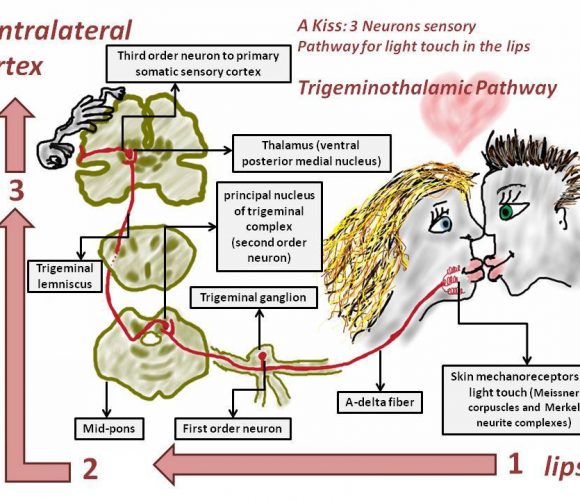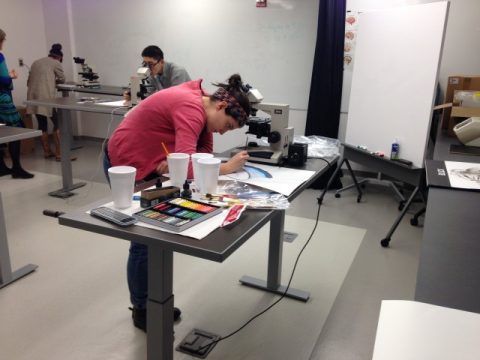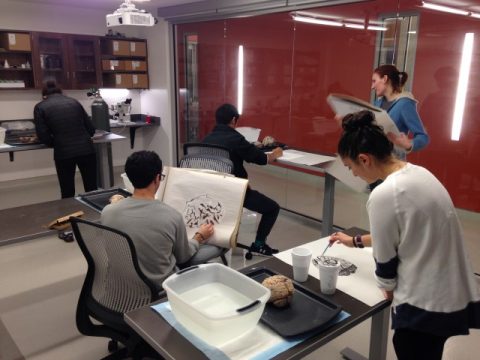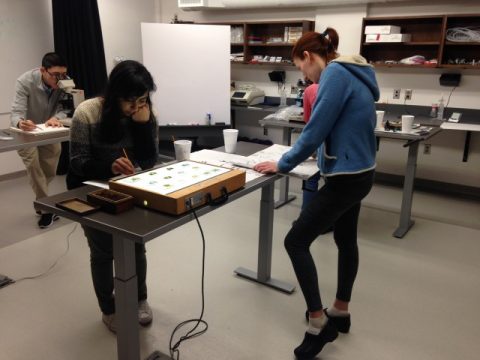Visualize your neuroscience knowledge
As we all know, visualizing neuroscience knowledge is an important element in the study of Medical Neuroscience. On the page Study Strategy, tip 4 says: …. Making rough sketches of what is shown is very useful, as demonstrated in “Visualize your knowledge” ( Tutorial Video Your Part! at 07:15)…….
Because it is so important there were peer assessment to reinforce this part of the study strategy in the sessions of the course on the session-based platform (2013 – 2016).
In the first assessment the assignment was: For this assignment, your challenge is to make visible your basic understanding of the four lobes of the cerebral hemispheres as seen from either the lateral surface OR the medial surface of the human brain.
Students were encouraged to make images with all sort of material and they had to
- Demonstrate the four lobes of the cerebral cortex and describe the boundaries of each.
- Sketch the major features of each cerebral lobe, identifying major gyri and sulci that characterize each lobe.
And here are some results of that assignment
Brain in Various Materials
Edible Brains
Brain and Body
Brain Drawings
1. Pathway for light touch
2. Pathway for pain and temperature
Extra credit (a number of points added to assignment score): pathways from face to cortex
As a result of that assignment our learning community created stunning images:
And of course the images made for extra credit gave us that wonderful picture that symbolizes this course: Brain Caress. Have a look at those images as well.
Extra credit: Sensation of the Face
As you can see, this course is inspiring and the members of our learning community are a creative group of people with care and love for the brain and the nervous system.
Visualizing and appreciating the wonders of brain form and structure at Duke University
The Duke students “Brain and Behavior” also get a chance to work on visualization of their knowledge. They go to the teaching lab for a session of drawing brains in various media (charcoal and paper; ink and paper; pastel and paper. You can see an impression in “Visualize and appreciate brain form and structure”.
Visualize and appreciate brain form and structure
